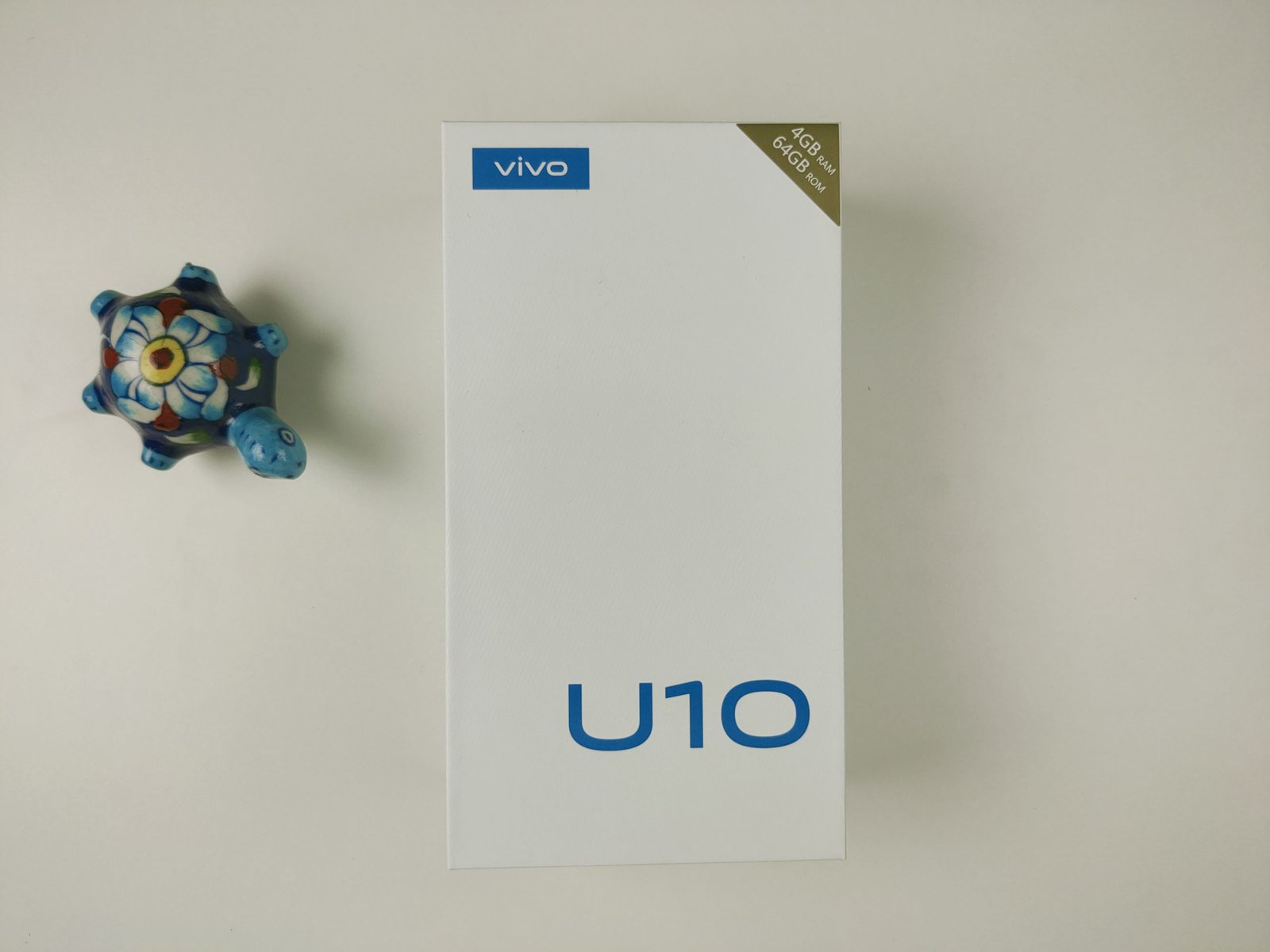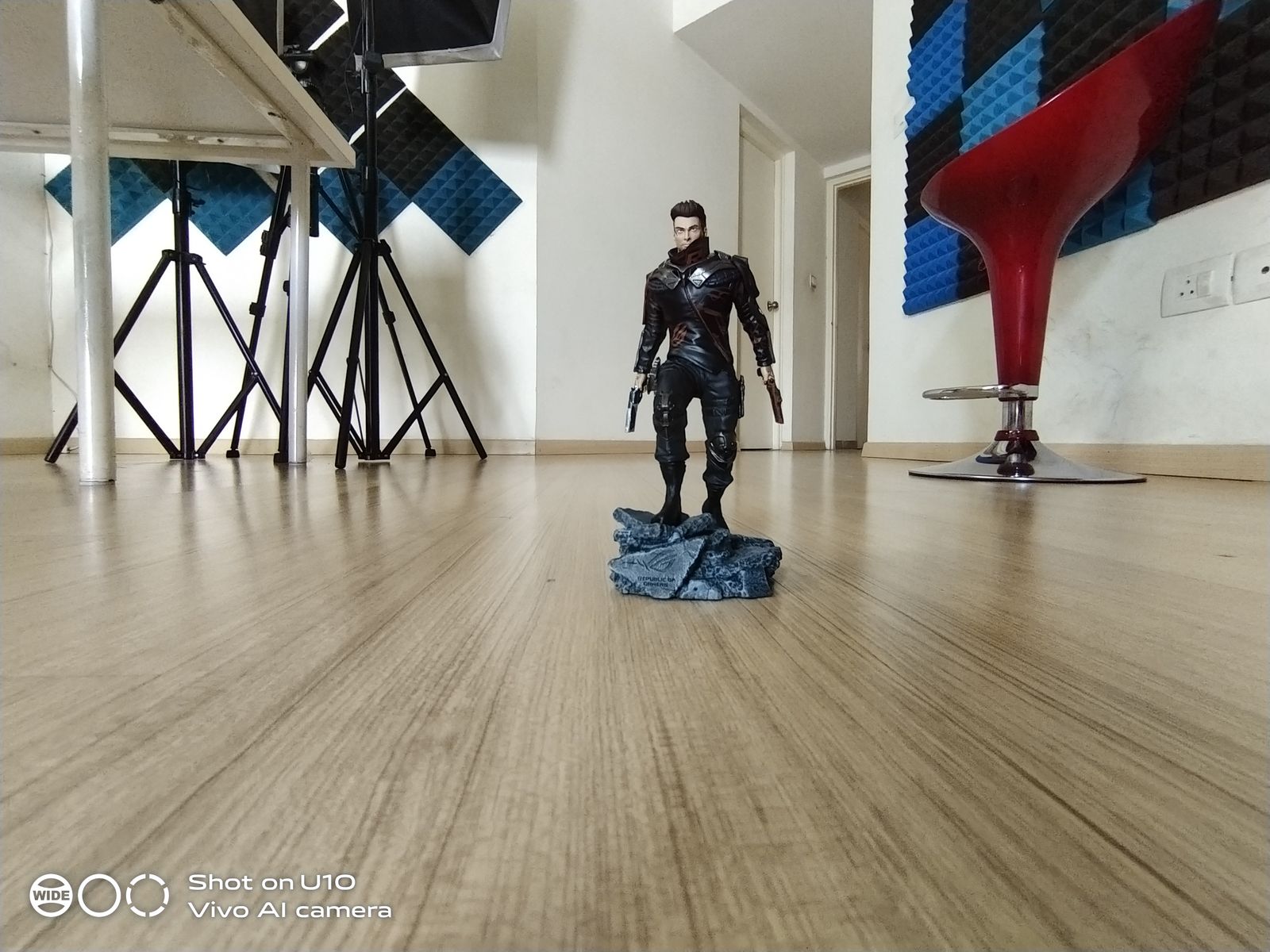The lately launched Vivo U10 has marked the debut of the company’s U-series in India. For starters, the new budget contender flaunts triple cameras, and a massive 5,000mAh battery with support for 18W fast charging- all this for a starting price of Rs. 8,990. You didn’t expect this from Vivo, right?
Well, with the price to performance ratio it packs in, the device will be posing tough rivalry to the likes of Xiaomi, Realme and Motorola in the sub-10K category. That said, we have had a couple of days with the device and here’s our detailed Vivo U10 review for you to decide if it’s really worth buying one.
Vivo U10 Specifications
Before starting with the Vivo U10 review, let’s have a glance at the phone’s specifications, pricing and things we get with the device.
- Display: 6.35-inch IPS LCD, 720 x 1544 pixels (268 PPI density), 89% screen-to-body ratio
- CPU: 11nm-based octa-core Qualcomm Snapdragon 665 (4×2.0 GHz Kryo 260 Gold & 4×1.8 GHz Kryo 260 Silver)
- GPU: Adreno 610
- RAM: 3/4GB
- Storage: 32/64GB, expandable up to 256GB
- Software: Android 9 Pie (FunTouch OS 9)
- Main Camera: 13 MP (f/2.2, PDAF) + 8 MP ultra-wide (f/2.2, 13mm)
+ 2 MP (f/2.4) depth sensor - Selfie Camera: 8 MP (f/1.8)
- Connectivity: MicroUSB 2.0, dual-band Wi-Fi 802.11ac, Bluetooth v5.0, GPS/ A-GPS, 3.5mm headphone jack, FM Radio
- Cellular: Dual SIM
- Fingerprint Scanner: Yes, rear-mounted
- Battery: 5,000 mAh, Li-ion Polymer, non-removable
- Charging: 18W fast charging
- Weight: 190.5 grams
- Colours: Electric Blue, Thunder Black
Price: Rs. 8,990 for 3/32GB | 9.990 for 3/64GB | 10,990 for 4/64GB
Box Contents
 Here’s a complete list of items you get inside the box:
Here’s a complete list of items you get inside the box:
- Vivo U10
- 18W Fast Charger (5V-2A / 9V-2A)
- micro-USB charging cable
- Transparent Silicon Case
- Sim Ejector Tool
- Documentation
Vivo U10 Review
Design
Starting off with the design, the Vivo U10 looks much familiar to other recent offerings from the brand, thanks to the polycarbonate back that flaunts a glossy gradient finish on top. It is available in a total of two colour options including Electric Blue and Thunder Black.
 The Electric Blue variant we have here gets a subtle blue hue at the back with shimmery diagonal patterns running down the lane. This indeed gives a premium appeal to the device but note that it’s a fingerprint magnet and gets smudgy in no time.
The Electric Blue variant we have here gets a subtle blue hue at the back with shimmery diagonal patterns running down the lane. This indeed gives a premium appeal to the device but note that it’s a fingerprint magnet and gets smudgy in no time.
Flipping the phone over to the front, we’ve got a water-drop notch display with fairly thin bezels in the segment. Now, the phone does feel heavy due to the large battery, but it is grippy to hold and feels solid in hands. And while it resembles the Vivo Z1 Pro aesthetically, don’t expect it to offer the premium feel of a glass back.
Ports & Placements
Talking of placements, the phone gets the power button and volume rockers to the right followed by dual SIM + microSD card slot to the left. The bottom of the phone features a speaker grill, 3.5 mm headphone jack, a microphone and a micro USB port. Whereas, the front camera is given right below the earpiece on top. At the back, we have a vertically stacked pair of triple cameras and LED flash, accompanied by a squircle shaped fingerprint scanner and Vivo branding at the bottom.
Display
The Vivo U10 comes with a 6.35-inch IPS LCD panel with an HD+ resolution of 720 x 1544 pixels, and a pixel density of 264PPI. There’s a water-drop notch on top, and like any other budget phone, this one too has a thick chin at the bottom.
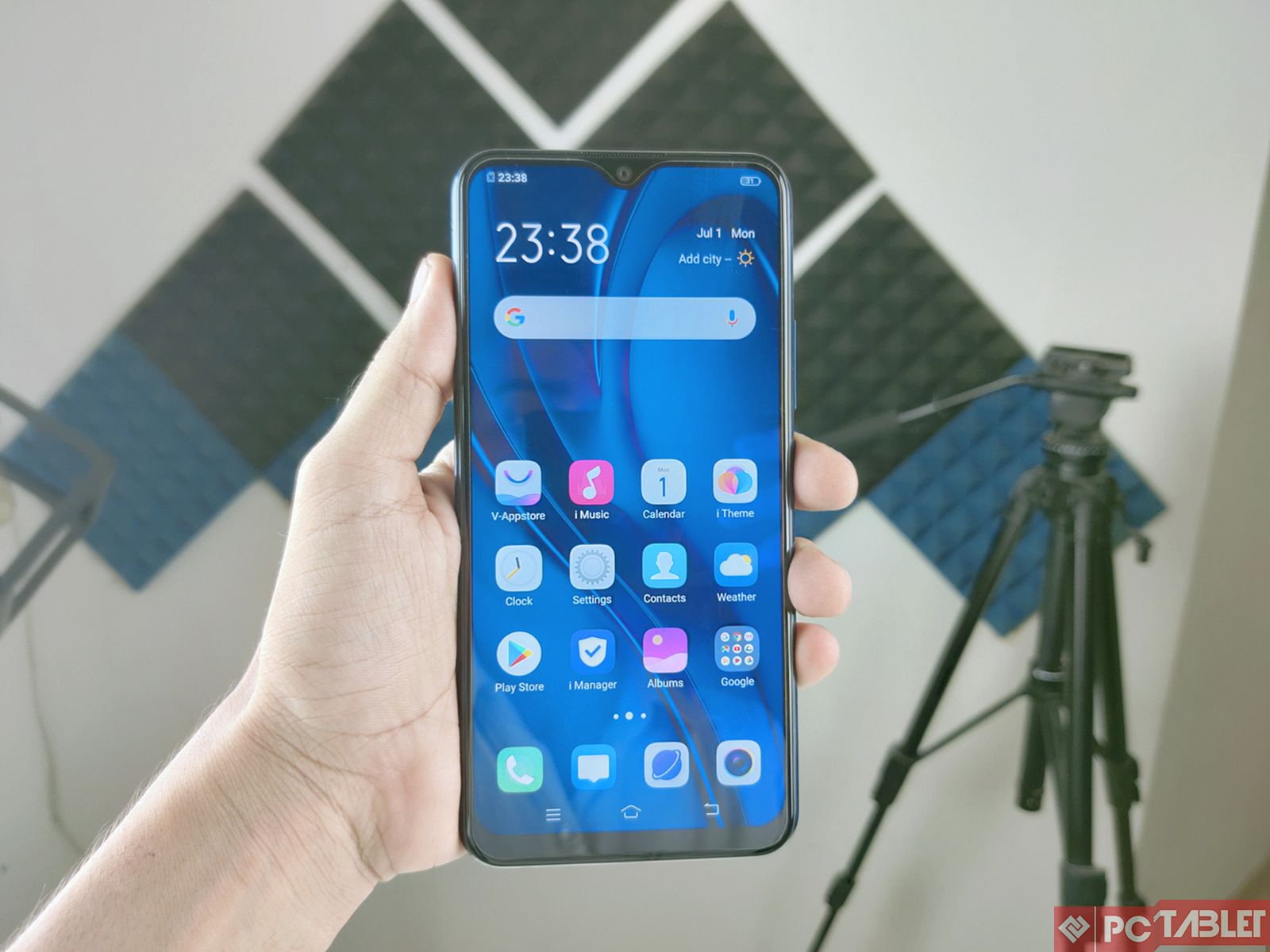 The screen itself looks quite vibrant, has excellent viewing angles, and it gets reasonably bright in almost all lighting conditions, including direct sun outdoors. Nonetheless, it’s an HD+ panel at the end of the day and hence won’t impress pixel-peepers.
The screen itself looks quite vibrant, has excellent viewing angles, and it gets reasonably bright in almost all lighting conditions, including direct sun outdoors. Nonetheless, it’s an HD+ panel at the end of the day and hence won’t impress pixel-peepers.
Worth mentioning, the phone does come with Widevine L1 certification and is suitable for enjoying HD content on streaming services like Netflix and Amazon Prime Video.
Performance
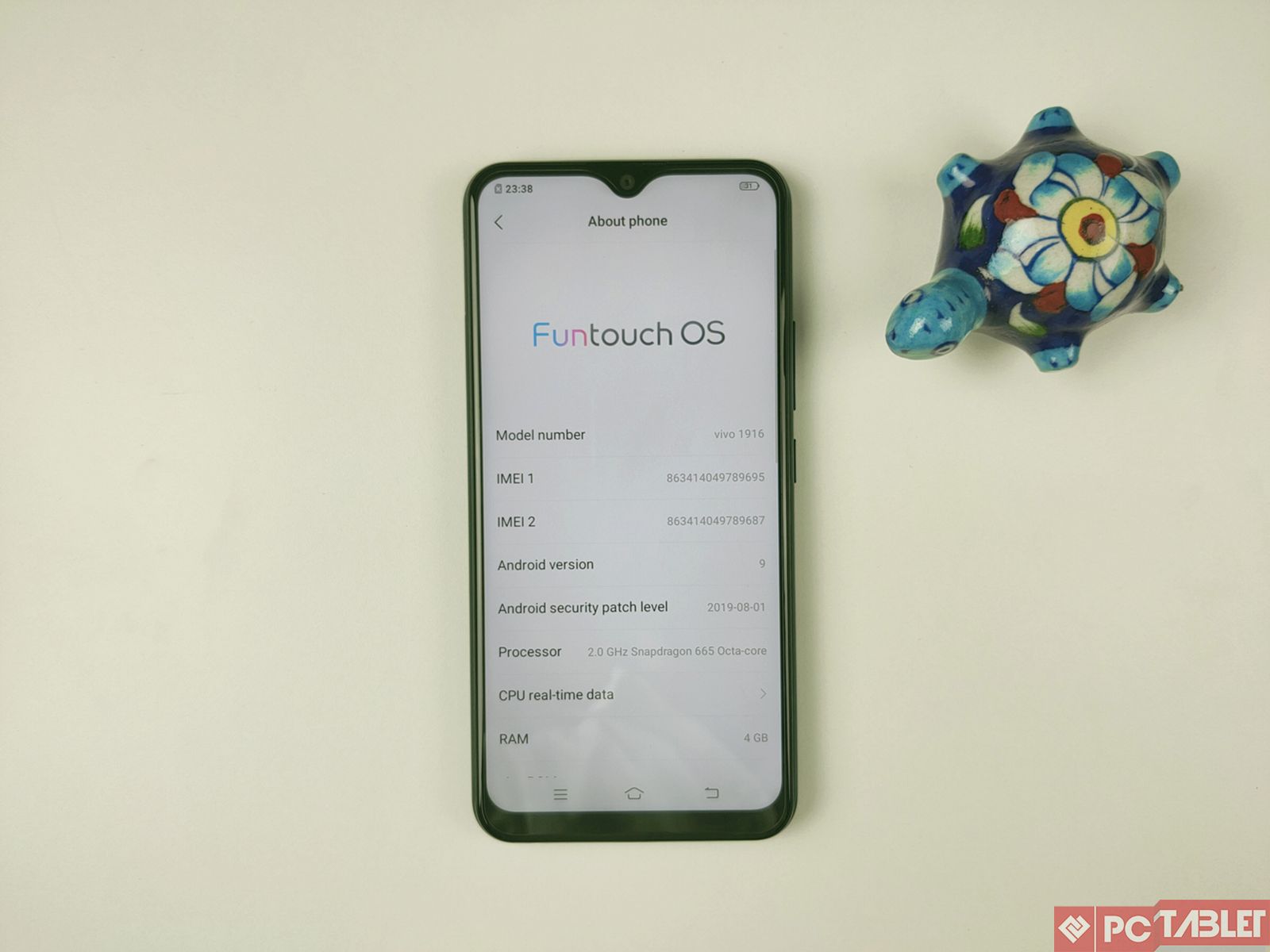 Powering the phone is an octa-core Qualcomm Snapdragon 665 AIE SoC which is an 11-nm based processor clocked at 2.0GHz. It is further coupled with Adreno 610 GPU, up to 4GB of RAM and 64GB of internal storage.
Powering the phone is an octa-core Qualcomm Snapdragon 665 AIE SoC which is an 11-nm based processor clocked at 2.0GHz. It is further coupled with Adreno 610 GPU, up to 4GB of RAM and 64GB of internal storage.
As far as the performance is concerned, the phone performs amazingly well in day to day tasks, including browsing the web, watching videos, playing casual games and surfing social media. Plus, the UI feels optimised well with the right amount of responsiveness on offer.
However, FunTouch OS is undoubtedly a cumbersome UI with loaded features. Following which, the phone tends to get sluggish when you try heavy multitasking, at least on 3GB RAM variant that we have here.
Coming to the gaming, we played both the Call of Duty and PUBG Mobile in medium graphics settings, and they ran without any issues whatsoever. Besides, the phone’s temperature was kept well under control, and we didn’t notice any overheating issues. Anyways, if you’re a hardcore gamer, then we’ll suggest spending more onto phones with Snapdragon 710 at least.
Software
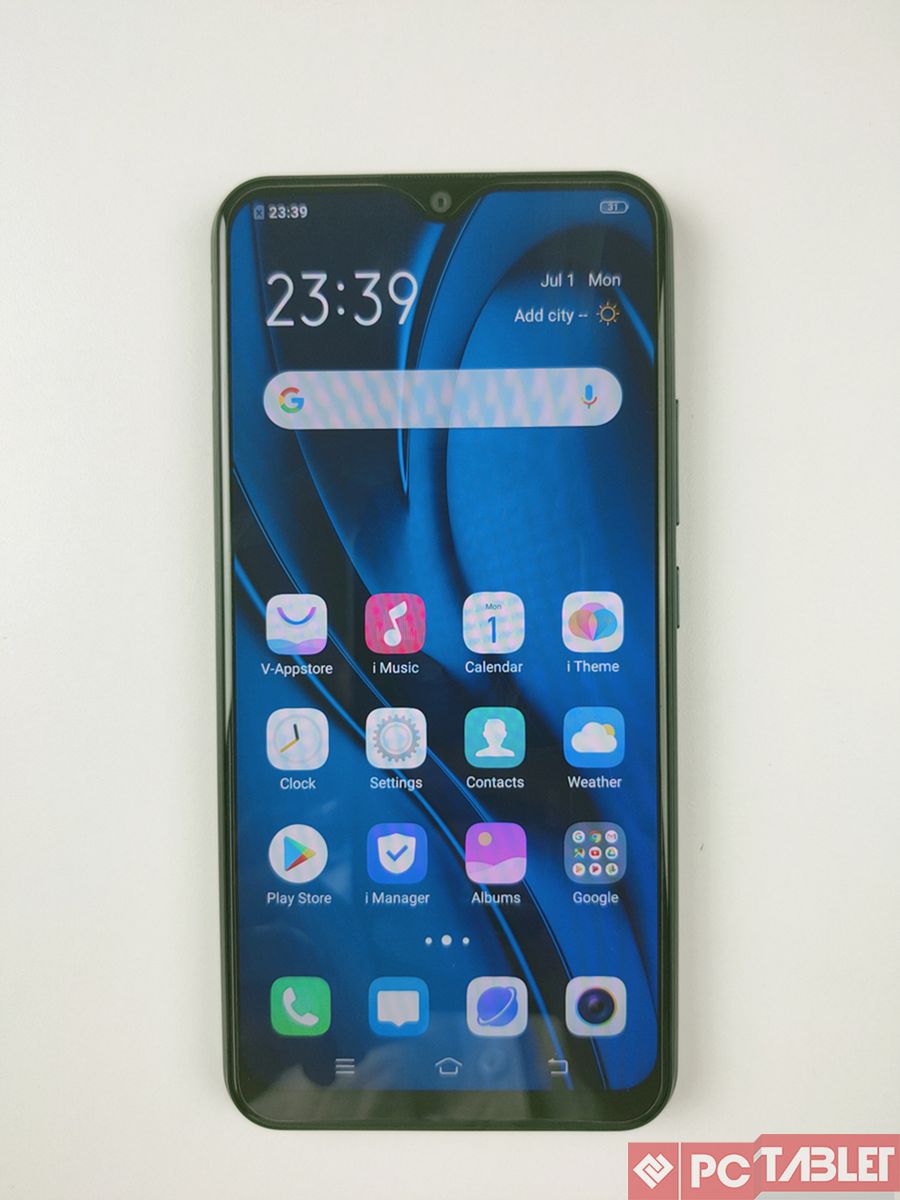 On the software front, the Vivo U10 runs on the company’s custom FunTouch OS 9, based on Android 9 Pie. Now, the FunTouch resembles iOS in many areas and comes with a bunch of preloaded bloatware including Vivo’s own app store, Vivo Browser, EasyShare file sharing tool, followed by third-party apps like UC Browser, Amazon, NewsPoint, WPS Office, PhonePe, and more.
On the software front, the Vivo U10 runs on the company’s custom FunTouch OS 9, based on Android 9 Pie. Now, the FunTouch resembles iOS in many areas and comes with a bunch of preloaded bloatware including Vivo’s own app store, Vivo Browser, EasyShare file sharing tool, followed by third-party apps like UC Browser, Amazon, NewsPoint, WPS Office, PhonePe, and more.
Besides, the UI has a slightly different navigation pattern- the quick setting toggles which are generally found on notification pane in other phones, need to be pulled upwards from the bottom of the screen. And the notification panel itself is quite messed up. Moreover, Vivo is using an ancient style of Android navigation buttons which could be an eyesore for many. Thankfully, it does get an option for full-screen gestures, but then again, it’s not perfect.
That being said, there are some useful customisation features including a built-in theming engine, screen recorder, system-wide dark mode, and AI-based Jovi assistant. There’s also a gaming assistant called Game Cube which blocks calls, alongside letting you enable 4D vibration for an improved gaming experience.
Cameras
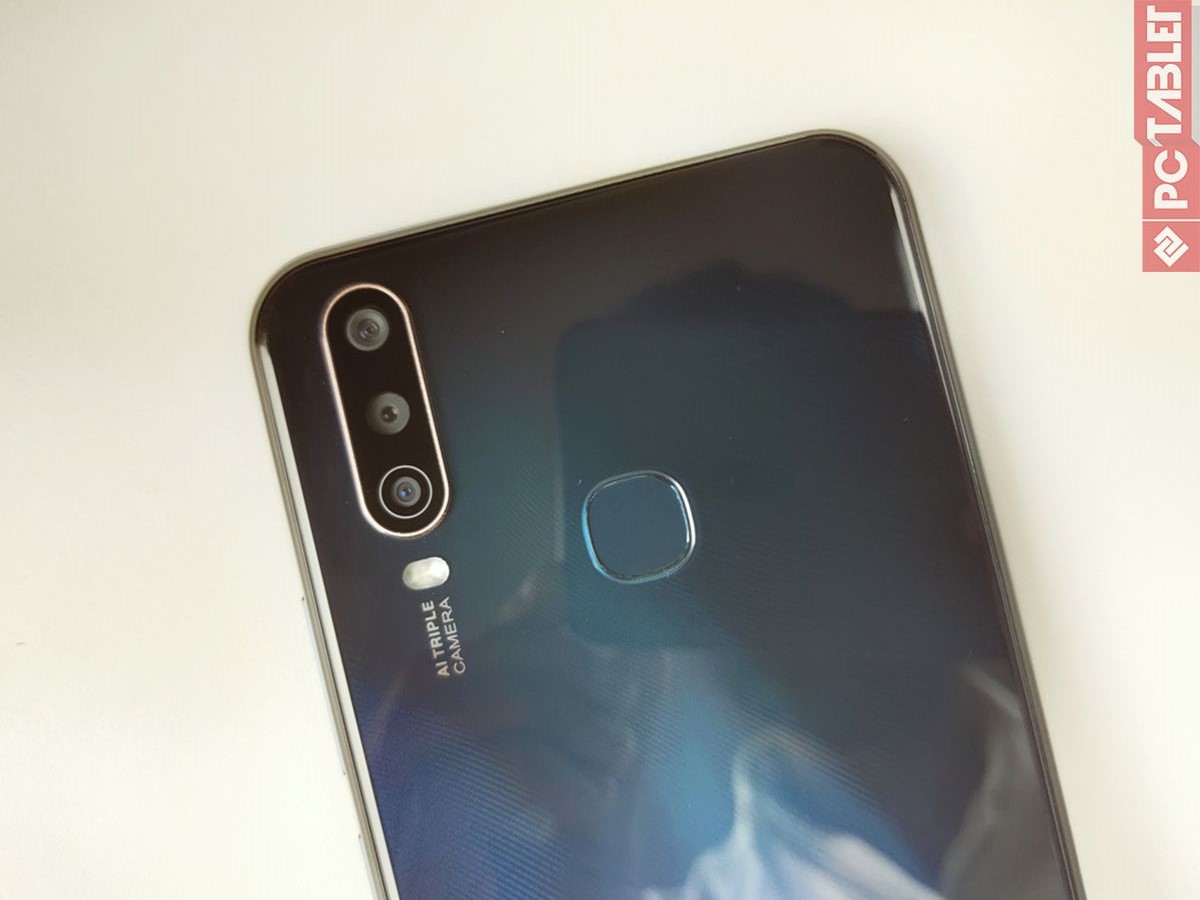 The Vivo U10 boasts of an AI triple camera setup at the back, comprising a 13MP primary sensor, an 8-megapixel 120-degree ultra-wide sensor, and a 2-megapixel portrait sensor. For selfies, there’s an 8-megapixel sensor up front, housed by the water-drop notch. The typical Vivo camera app offers a number of features like AI beauty, pre-loaded filters, HDR, Portrait Bokeh, and wide-angle mode but fails to impress when it comes to fluidity.
The Vivo U10 boasts of an AI triple camera setup at the back, comprising a 13MP primary sensor, an 8-megapixel 120-degree ultra-wide sensor, and a 2-megapixel portrait sensor. For selfies, there’s an 8-megapixel sensor up front, housed by the water-drop notch. The typical Vivo camera app offers a number of features like AI beauty, pre-loaded filters, HDR, Portrait Bokeh, and wide-angle mode but fails to impress when it comes to fluidity.
Now, pictures shot in daylight have plenty of detail with decent enough dynamic range. Whereas, the ones shot in low-light have a lot of noise creeping in. The wide-angle camera, on the other hand, takes a hit when it comes to dynamic range and detail. Then again, it does the job well and offers a whole new perspective while clicking pictures.
 The selfie camera performs on par with expectations, thanks to the software enhancements made by Vivo. However, the quality starts to deteriorate once you move indoors or in dim-lit conditions. There’s a portrait mode as well, but the edge detection takes a hit at times. Overall, the Vivo U10 has average cameras- neither impressive nor bad.
The selfie camera performs on par with expectations, thanks to the software enhancements made by Vivo. However, the quality starts to deteriorate once you move indoors or in dim-lit conditions. There’s a portrait mode as well, but the edge detection takes a hit at times. Overall, the Vivo U10 has average cameras- neither impressive nor bad.
Battery & Charging
Battery life is indeed one of the major selling points for the Vivo U10, which easily lasts for more than a day and stretches up to two on medium usage. Now, while its closest competitor Realme offers the exact same 5,000mAh capacity on Realme 5, the U10 snatches away the crown with the support for fast charging.
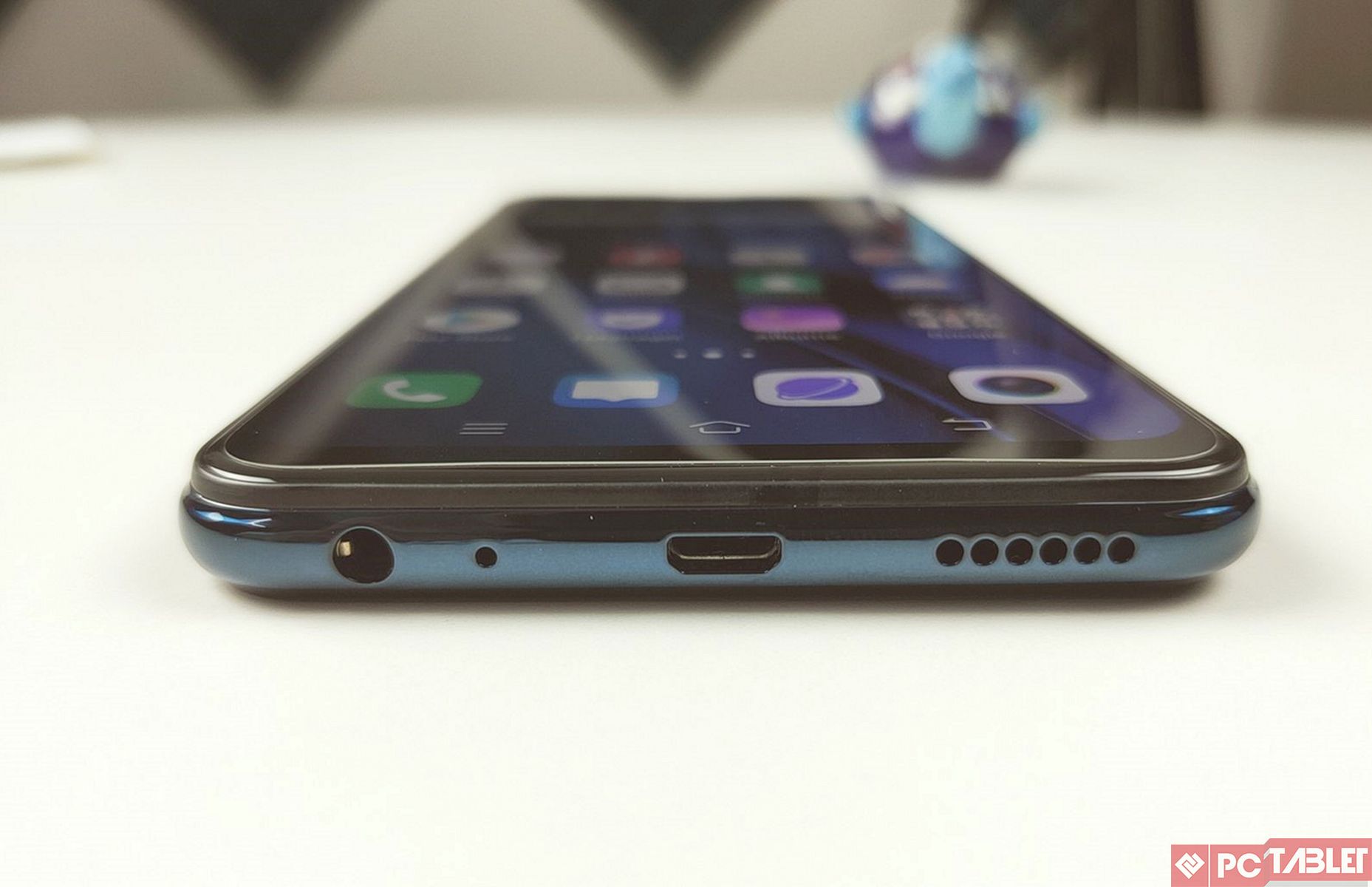 Notably, the dual-engine 18W fast charging which we’ve seen only in upper mid-range smartphones from Vivo up till now, juices up the device from 0 to 100 well around 100 minutes. And it indeed helps the phone in getting extra points when it comes to battery life.
Notably, the dual-engine 18W fast charging which we’ve seen only in upper mid-range smartphones from Vivo up till now, juices up the device from 0 to 100 well around 100 minutes. And it indeed helps the phone in getting extra points when it comes to battery life.
Pros
- Good overall design
- Apt performance
- Excellent Battery Life
- Fast Charging
Cons
- FunTouch OS is annoying
- Heavy at 190.5 grams
- Average camera performance
Vivo U10 Review Verdict: Should you buy it?
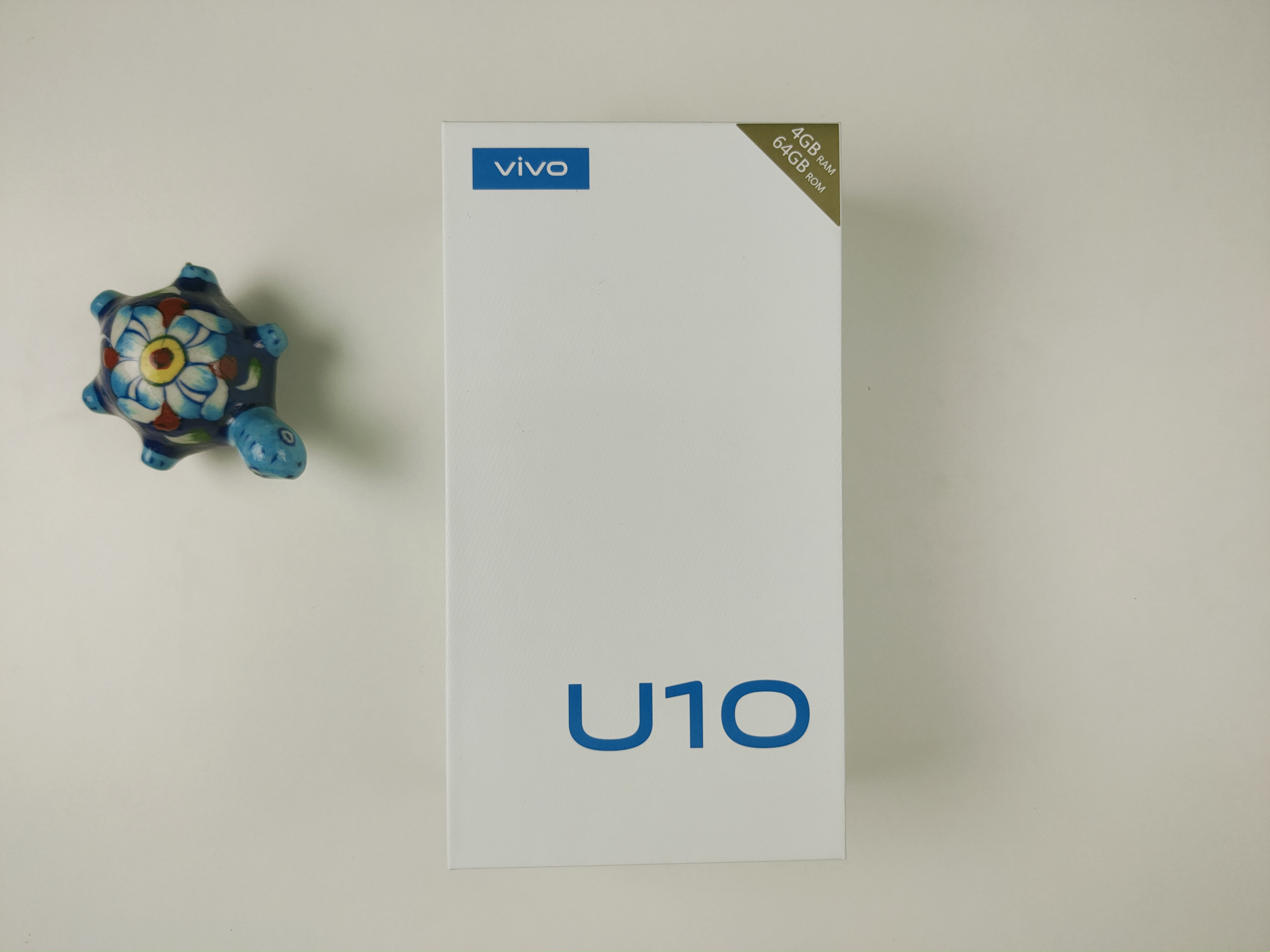 Vivo U10 turns out to be an excellent value for money offering with a massive battery, high-speed charging, and expandable storage. The performance doesn’t disappoint either, and the cameras are good enough to be manageable for an average user.
Vivo U10 turns out to be an excellent value for money offering with a massive battery, high-speed charging, and expandable storage. The performance doesn’t disappoint either, and the cameras are good enough to be manageable for an average user.
If the heavyweight and FunTouch OS don’t bother you much, then it’s certainly one of the most compelling options at a budget of under INR 10,000. Nevertheless, if you can spend more, we’ll suggest having a look at the Realme 5 Pro, Xiaomi Mi A3 (review), discounted Poco F1 and Vivo’s own Z1 Pro (review).

